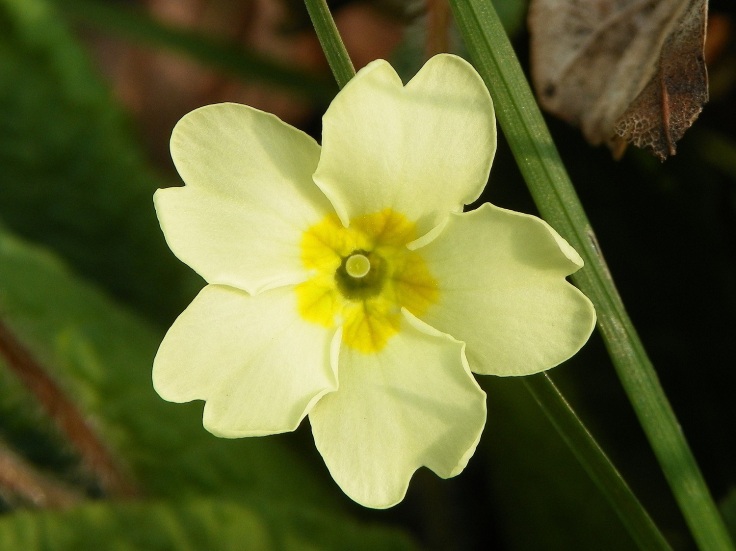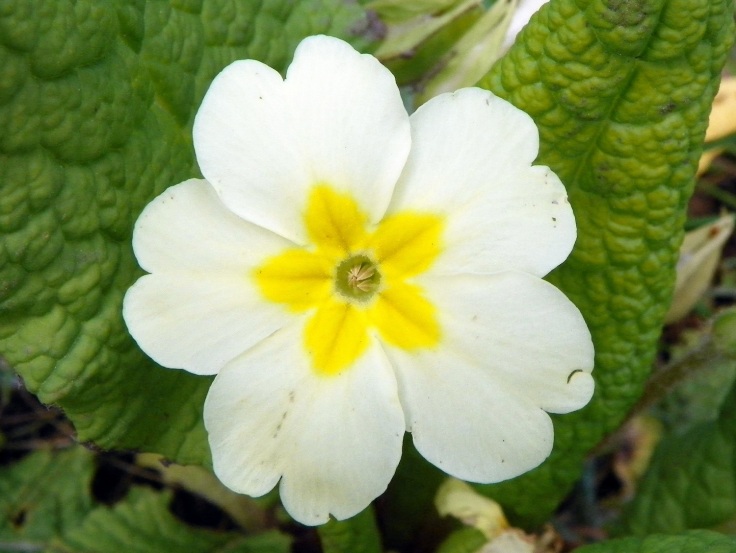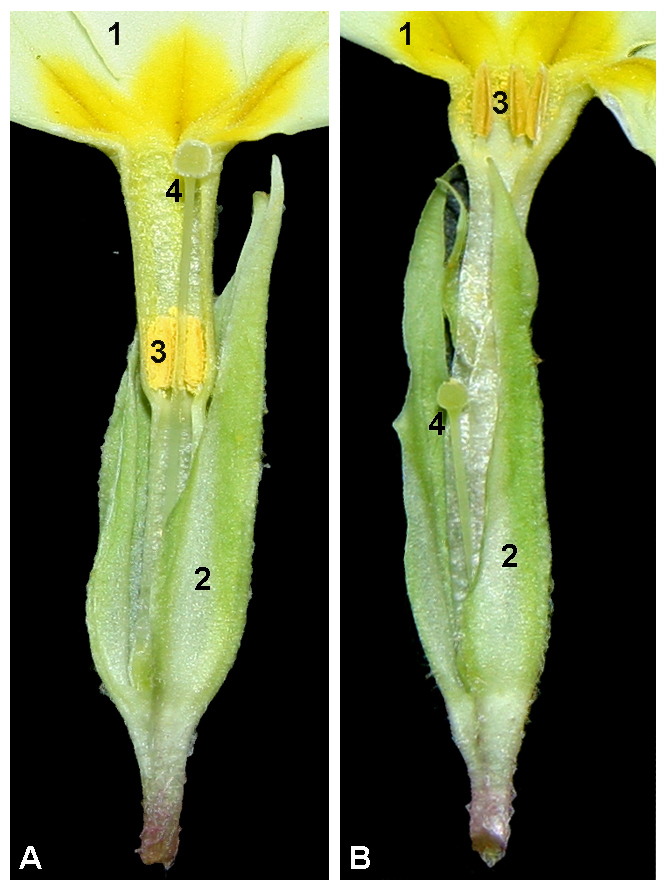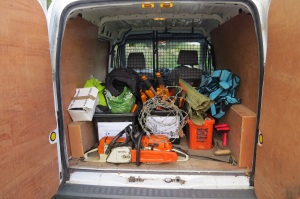The sex life of a primrose
Primroses have an interestingly complicated reproduction system.
The flowers are hermaphrodite but heterostylous. This means that while each flower bears male and female structures (hermaphrodite), there are two types of flower: either pin-eyed flowers in which the pistil, the female structure, is long and the stamens are short or thrum-eyed flowers in which the stamens are long and the pistil is short. Each primrose plant will have flowers of only one type.
In the cross-sections, 1 and 2 are the petals and the calyx; 3 and 4 are the stamens and the pistil. In the pin-eyed flower [A] the pistil is prominent and in the thrum-eyed flower [B] the stamens are prominent. The next picture is of obviously pin-eyed flowers.
The two flower forms exploit different kinds of pollinators. The early bumblebees and Lepidoptera that visit a primrose will transfer pollen on their bodies from the long-stamens of a thrum-eyed flower to the long pistil of a pin-eyed flower; the small flies and tiny pollen beetles that find their way into the tubular receptacle at the base of the flower will transfer pollen between short stamens and short pistils. The primrose has doubled its chances of successful pollination at a time of year when insect pollinators are in short supply.

1 
2
[1] a pin eyed flower; [2] a thrum eyed flower; thrum is the name in Old English for the fringe of warp threads left after cloth is cut from the loom
Primroses prevent self-fertilisation with a neat genetic mechanism that makes flowers of the same type incompatible: thrum to thrum or pin to pin fertilisation is ineffective. As each plant has flowers of only one type, self- fertilisation is therefore impossible.
They have a final trick to ensure successful reproduction: their seeds have an elaiosome, a fleshy structure attached to one end of the seed. An elaiosome is rich in fats and proteins that are particularly attractive to ants. The ants carry the seeds away, feed the elaiosome to their larvae and throw the rest of the seed out onto their waste site which is, in effect, a compost heap. The primroses have provided the ants with baby food and, in return, the ants have planted the primrose seeds in nutritious compost.

3 
4
[3] seeds with elaiosomes; [4] common black ant (Lasius niger)
Did you know that poisoning the ants in your garden would prevent your primroses from dispersing their seeds properly? It is these complex relationships between species that we need to explore and maintain if we are to help nature recover from the present crisis.







